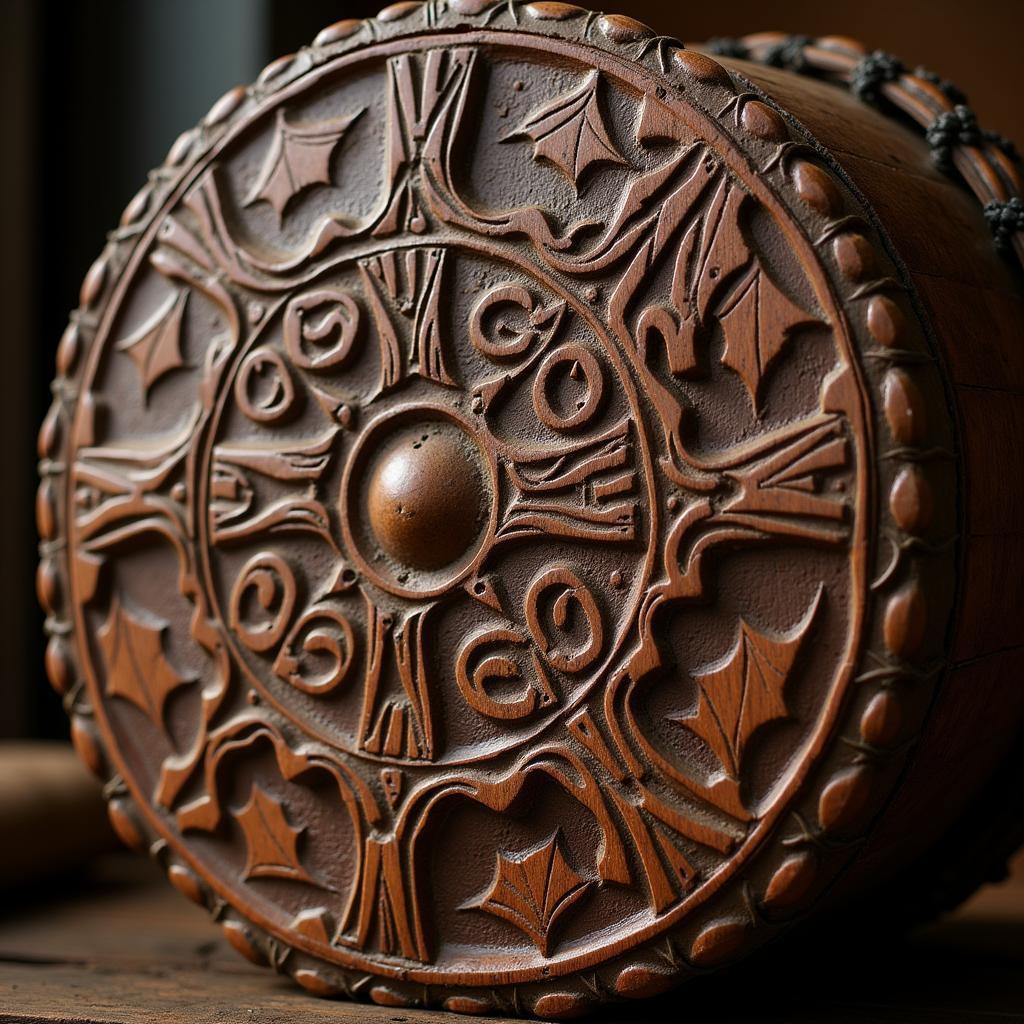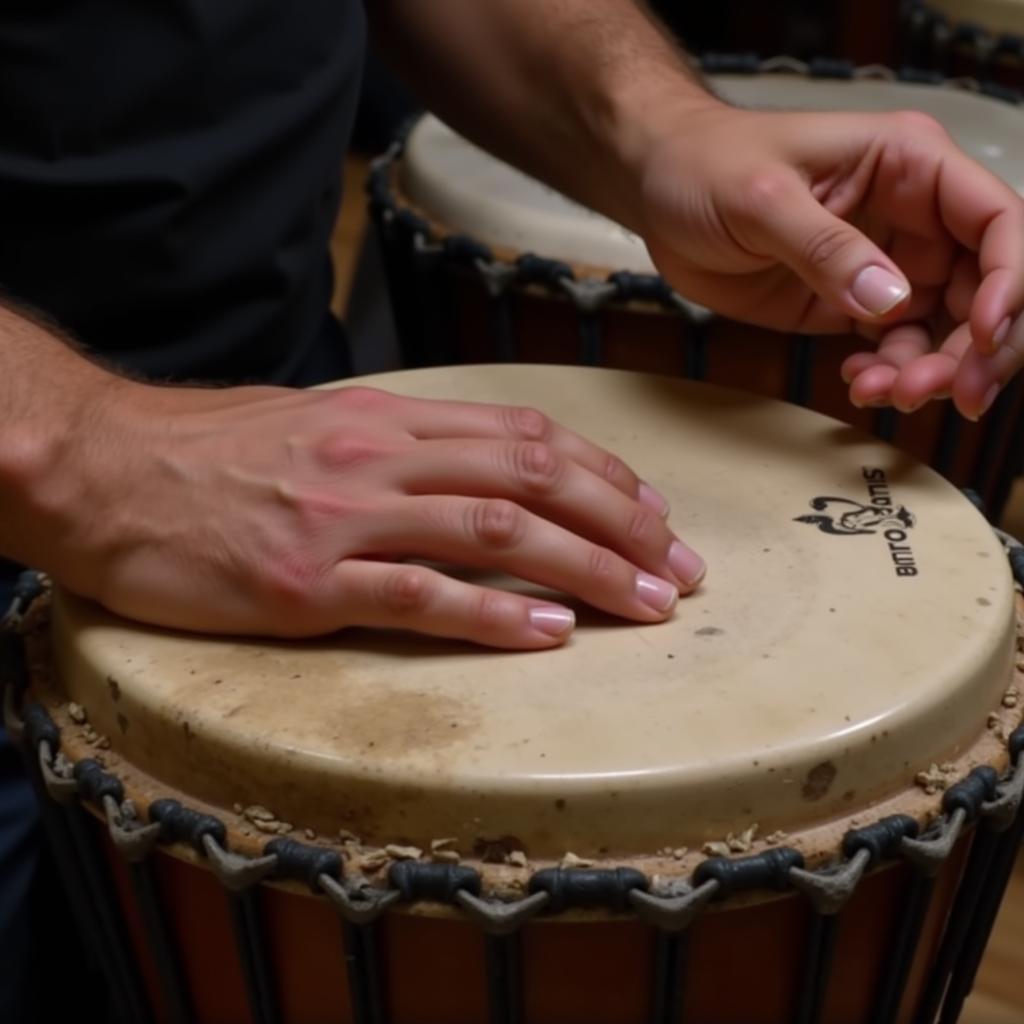The Rhythmic Heart of Africa: Exploring the African Djembe
The djembe, with its distinctive goblet shape and vibrant rhythms, is more than just a drum – it’s a symbol of Africa, pulsating with the continent’s history, culture, and soul. Originating from West Africa, the djembe has transcended geographical boundaries to captivate hearts worldwide with its powerful sound and captivating energy.
A Journey Through Time: Unveiling the Djembe’s Origins
 Ancient djembe carving
Ancient djembe carving
The djembe’s roots delve deep into the history of the Mandinka people, specifically the blacksmith caste known as the Numu. Believed to have emerged between the 12th and 14th centuries in the Mali Empire, this sacred drum has served as a vital tool for communication, celebration, and storytelling for generations.
Crafted from a single piece of hardwood and topped with a goat skin, the djembe’s creation is a testament to the Numu’s mastery. The name “djembe” itself stems from the Bambara phrase “Anke djé, anke bé,” meaning “gather together in peace,” reflecting its role as a unifying force in West African society.
The Language of the Djembe: More Than Meets the Ear
Beyond its visual appeal, the djembe speaks volumes through its diverse range of sounds. From the deep, resonant bass tones to the sharp, high-pitched slaps, this versatile instrument offers a complex palette for musical expression.
 Djembe player's hands
Djembe player's hands
Traditionally played with bare hands, the djembe’s voice is shaped by the intricate interplay of fingertips, palms, and the varying tension of the drumhead. This skillful manipulation allows skilled djembefolas (djembe players) to communicate a wide range of emotions, rhythms, and messages, transforming the drum into a powerful storytelling medium.
“The djembe is a conduit,” explains renowned djembefola Mamady Keita, “a bridge between the physical and spiritual realms. Through its rhythms, we connect with our ancestors, celebrate life’s joys, and navigate its sorrows.”
The Djembe’s Enduring Legacy: From Rituals to the Global Stage
For centuries, the djembe played a pivotal role in various West African ceremonies. From vibrant celebratory dances to sacred rituals marking births, deaths, and harvests, the djembe’s rhythms provided a soundtrack to life’s most significant moments.
 Traditional djembe performance
Traditional djembe performance
However, the djembe’s allure wasn’t confined to the African continent. The mid-20th century witnessed its introduction to the West, captivating audiences with its infectious rhythms and captivating performances. This cultural exchange led to the djembe’s integration into various musical genres, from jazz and funk to world music, demonstrating its versatility and enduring appeal.
Experiencing the Magic: Where to Find Your Own Djembe Beat
Today, the djembe continues to enthrall people worldwide. Whether you’re drawn to its historical significance, captivating sound, or simply seeking a new musical adventure, exploring the world of the djembe is an enriching experience.
From workshops and classes led by experienced djembefolas to online resources offering a gateway into this vibrant tradition, there are countless ways to embark on your own djembe journey.
Conclusion: The Djembe’s Rhythmic Call
The African Djembe’s journey from the heart of West Africa to the global stage is a testament to its enduring power. More than just a drum, it embodies a rich tapestry of culture, history, and human expression, inviting all who listen to connect with its infectious rhythms and timeless spirit. So, why not answer the djembe’s call and discover the magic within its beat?
